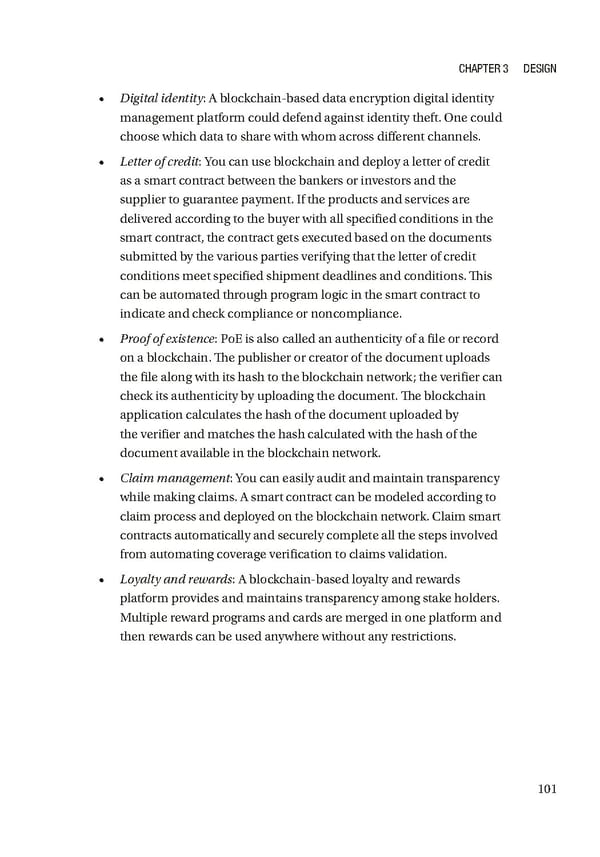Chapter 3 Design • Digital identity: A blockchain-based data encryption digital identity management platform could defend against identity theft. One could choose which data to share with whom across different channels. • Letter of credit: You can use blockchain and deploy a letter of credit as a smart contract between the bankers or investors and the supplier to guarantee payment. If the products and services are delivered according to the buyer with all specified conditions in the smart contract, the contract gets executed based on the documents submitted by the various parties verifying that the letter of credit conditions meet specified shipment deadlines and conditions. This can be automated through program logic in the smart contract to indicate and check compliance or noncompliance. • Proof of existence: PoE is also called an authenticity of a file or record on a blockchain. The publisher or creator of the document uploads the file along with its hash to the blockchain network; the verifier can check its authenticity by uploading the document. The blockchain application calculates the hash of the document uploaded by the verifier and matches the hash calculated with the hash of the document available in the blockchain network. • Claim management: You can easily audit and maintain transparency while making claims. A smart contract can be modeled according to claim process and deployed on the blockchain network. Claim smart contracts automatically and securely complete all the steps involved from automating coverage verification to claims validation. • Loyalty and rewards: A blockchain-based loyalty and rewards platform provides and maintains transparency among stake holders. Multiple reward programs and cards are merged in one platform and then rewards can be used anywhere without any restrictions. 101
 Building Digital Experience Platforms Page 120 Page 122
Building Digital Experience Platforms Page 120 Page 122